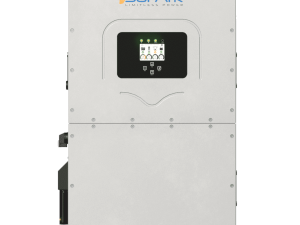Solar panel inverters are crucial components in any solar energy system. They play an essential role in converting the direct current (DC) electricity generated by solar panels into alternating current (AC) electricity, which is the standard used by most household appliances and the grid. Understanding how these inverters work and their different types can help you make informed decisions when setting up a solar power system.
What is a Solar Panel Inverter?
At its core, a solar panel inverter is an electronic device that converts the DC electricity produced by solar panels into AC electricity. Solar panels generate DC electricity as sunlight hits the photovoltaic cells, but most homes and businesses use AC electricity. The inverter ensures that the electricity generated is compatible with the electrical system and appliances.
Types of Solar Inverters
There are several types of solar inverters, each with distinct advantages and applications:
String Inverters: These are the most common type of solar inverters. A string inverter connects multiple solar panels in series, or "strings," and converts the combined DC output into AC. They are generally cost-effective and straightforward but can be less efficient if one panel in the string is shaded or malfunctioning, as the performance of the entire string can be affected.
Microinverters: Microinverters are small inverters installed on each individual solar panel. They convert DC to AC at the panel level, allowing each panel to operate independently. This design minimizes the impact of shading or panel defects, potentially increasing overall system efficiency. Microinverters can be more expensive than string inverters but offer improved performance and monitoring.
Power Optimizers: Power optimizers are devices that work in conjunction with a string inverter. They are attached to each solar panel and optimize the DC output before sending it to the inverter. This technology combines some of the benefits of microinverters with the cost-effectiveness of string inverters, providing a balance between performance and price.
Hybrid Inverters: Hybrid inverters, also known as battery-based inverters, can manage both solar energy and energy storage systems like batteries. They allow excess solar power to be stored for use during non-sunny periods, offering greater energy independence and reliability. Hybrid inverters are ideal for those looking to integrate solar energy with battery storage.
Key Features to Consider
When selecting a solar panel inverter, several features should be considered:
Efficiency: Inverter efficiency is crucial as it affects the amount of usable electricity generated. Look for inverters with high efficiency ratings to maximize energy output.
Durability and Warranty: Solar inverters are typically built to last, but it's essential to choose a model with a good warranty. Most inverters come with a 5 to 10-year warranty, with extended options available.
Monitoring Capabilities: Many modern inverters offer monitoring features that allow you to track the performance of your Solar USA. This can help in identifying issues and optimizing energy production.
Compatibility: Ensure that the inverter you choose is compatible with your solar panels and the electrical system of your home or business.






Comments